Indoor Gardening
Recently, I heard that 2005 was the year with the highest gardening activity seen in the last five years: more than 91 million U.S. households purchased some sort of horticultural product. Despite the good news that 83 percent of all households are buying plants, I can’t stop thinking about the old stories I hear from industry veterans about the houseplant boom during the flower power days of the 1960s.
Those odd and glorious days when everyone was into collecting ivy varieties, sharing begonia cuttings and conversing about exotic fittonias sound to me as esoteric as owning a fully decked-out VW van. I wasn’t even born at that time, which should explain my wide-eye wonder when I hear those tales. But I often think about the cyclicity of market trends and fashion and how every significant movement seems to reappear after an absence of a few decades: from stock market bubbles to Ray-Ban aviator sunglasses. Has the time arrived for indoor gardening to return to its reign with a roar?
Marketplace Macrotrends
The marketplace conditions for indoor gardening’s return to popularity are ripe, but if we are to capitalize on its resurgence, we need to understand several large-scale marketplace trends that are starting to affect our industry.
Baby Boomers. Even though quite affluent and gardening-prone, the Baby Boomer demographic group (born roughly 1946-1964 and numbering 78 million people) is showing declining interest in traditional gardening. This is due primarily to the physical constraints imposed by their advancing age and ability to spend hours working outside in the garden.
Generation X. Additionally, Generation X (born roughly 1965-1979), currently the smallest consumer group numbering 49 million, spends the least amount on gardening. Urban sprawl, long commutes and busy lifestyles tend to eat time away from their outdoor gardening activities.
Generation Y. Let’s not forget the young and often underestimated Generation Y (born roughly 1980-1994), which stands strong at 71 million. This group represents the youngest generation of new homeowners with first homes acquired at the average age of 25 and purchasing power almost equal to the Boomers’. Despite their eco orientation, Generation Y tends to spend less time outdoors and more time with electronic media and books.
Apartment Living. In addition, the popularity of apartment living is increasing among households who could afford to buy homes if they chose. In the early 1900s, apartment living was considered chic. America’s cities were high density, pedestrian-friendly areas. But the arrival of new transportation systems and evolution of the mortgage finance system made it possible for families to leave the cities and solidified the notion that owning a home of one’s own is the pinnacle of security and success.
Now it appears the pendulum is swinging back to favor apartment living. And this tendency is not driven by the expected consumer groups of Generations X and Y: In reality, many empty nesters with ample income choose to move closer to entertainment and leave behind the daily chores of home ownership and landscape maintenance.
Regardless of the obvious message these symptoms are sending, something really interesting is happening in our society with its orientation toward indoor gardening. Personal values such as connection with nature, wellness, relaxation and balance are becoming the leading factors that shape today’s consumer purchasing habits. The desire to own a piece of nature and its derivative benefit of detaching oneself from the fast pace of life, in my opinion, will deliver the next big spike of indoor gardening popularity.
What Is Indoor Gardening?
Indoor gardening is all about discovering what makes a living space a better place to exist. Accent plants, dish gardens, Zen gardens, herb boxes, window boxes, hanging baskets and terrariums are just a few of the potential expressions of indoor gardening. In reality, even a solitary gold pothos plant in a college dorm can have the same effect as a $2,000 interiorscape job in a large home. Indoor gardening is as individual as it gets.
I recently returned from a short trip to Washington, D.C., where I visited a couple of close friends who happened to reside in the upscale downtown D.C. area. Needless to say, their apartment is the size of a broom closet, and their monthly rent is astronomical. But there was one thing that left me with a lasting impression: The entire wall of their living room was occupied by a jungle of thriving green plants. Surrounded by the city noise of emergency sirens and never-ending traffic, my friends were able to create a sanctuary of tropical foliage plants that delivered at least a tiny sliver of natural peace and balance to their hectic lives.
Besides originality, the other main trend in indoor gardening is the demand for finished products. The available time for re-potting and “playing in the dirt,” as romantic as it sounds, is becoming extinct. In sync with the typical expectations for instant gratification, consumers look forward to receiving immediate satisfaction upon purchasing a houseplant. Thus, the necessity for upscale pots, high quality live plant combinations and ready-to-display trendy pot colors will continue to rise.
More Than Plants
Another characteristic of indoor gardening is its dependency on interior décor trends. With the help of an overabundance of home-improvement TV shows, a good sense of interior décor style is becoming quite the norm. The typical shopper doesn’t want just a green plant that cleans her air. She also wants a plant in a pot that will contribute to her Asian fusion setup or to her eclectic furniture.
This brings us to the point where we could ask ourselves: Are we discussing the plants as we know them, or are we talking about a piece of upscale artistry? Are indoor gardening products considered luxury goods? Typically, decorative plants fall into the category of products purchased with discretionary income, so in a way, they are luxuries.
The good news is the members of Generation X annually spend 18 percent more than Boomers on luxury goods. The bad news is some retailers still view houseplants as low-price commodities. Low cost and small margin competition during the last couple of decades led to the inevitable decline of retail pricing, and that naturally delivered an erosion of product quality. The only way to elevate the currently emerging trends of indoor gardening to sustained sales and profitability is through understanding that quality, design and real value are much more essential than low product price.
Marketing Indoor Gardening
The classic definition of marketing argues the best way to sell a product is to showcase its characteristics and benefits and, therefore, communicate its value. The benefits of indoor gardening are well known to us in the industry. But how to effectively communicate these benefits to the consumer is not. Indoor houseplants’ air-cleaning ability, mind-calming quality and décor-beautifying character are quite obvious to us. The question is does our average customer know all this, or even more interestingly, does he or she readily associate the plants displayed at the store with these benefits. How do we translate our professional wealth of knowledge into real marketing at the store level?
Be The Consumer. The first thing to do is look at consumers as real people with real needs. Very often, we beat our heads against the wall trying to think of the next marketing gimmick, totally ignoring the fact that the answer is right in our stores. Observing shopping behavior, talking to customers and putting ourselves in their shoes can lead to the simplest and most profitable conclusions. Try to discover how an indoor garden looks in the eyes of your customers and then help them build it.
Originality. There isn’t a universal recipe for success with indoor gardening. The psychographic, income and style differences in this country are so diverse that only a highly customized approach, down to the specific neighborhood, can work. Retailing is becoming me-tailing. Consumers are tired of the typical mass-market generality and expect creativity, individuality and self-expression in the products they buy. This trend is exceptionally strong with home décor accessories, and indoor plants definitely share this need for originality. Come up with an indoor gardening product selection that directly appeals to the personality of your audience. Change it often to keep them coming back.
Impulse. The simplest way is to educate consumers is at point of sale. More than 65 percent of houseplants are purchased on impulse. This means three things: First, place your house plant displays close to entry and exiting areas of the store where high visual impact will encourage impulse purchases. Second, use professionally designed POP materials that will serve as the role of a silent advisor to explain benefits and characteristics. Third, arrange plants in simple interior décor vignettes to provide a glimpse of how such plants will look on a kitchen counter, living room shelf or child’s desk.
Educate. The education of the consumer is not just limited to the store experience. The vast majority of Generation X and virtually all of Generation Y feed and breathe information from a single source: the Internet. Building interest in indoor gardening projects and providing pre-purchase information online is cost-effective and absolutely necessary in this age of learning. Help your customers visualize that beautiful tabletop plant in their homes. Give them the confidence to start their own plant collection.
Customized product. Marketing of indoor houseplants can only be successful with a customized product mix that features exceptional quality, design and real value. Add to this effective pre-purchase and point-of-purchase communication that appeals to the personal style of the customer and you will positively fuel this growing trend of indoor gardening.
I don’t know if we will ever be able to resurrect the flower power days, but I am certain the era of upscale indoor gardening is here. It is up to us, growers and retailers, to start seeing the marketing opportunities in this development by looking into the individual needs of our unique customer.


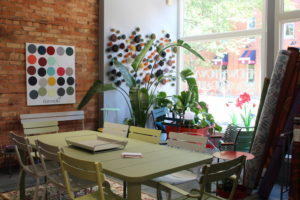
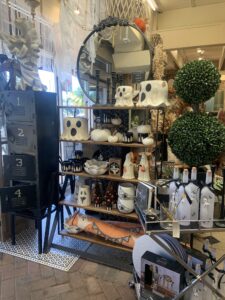
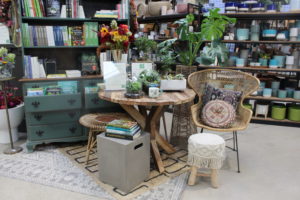
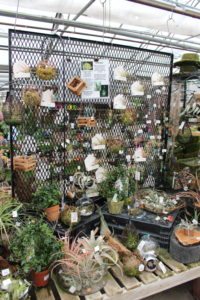
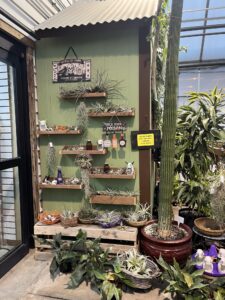
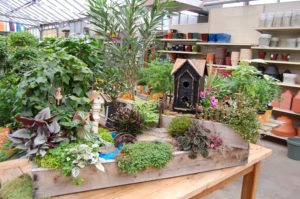

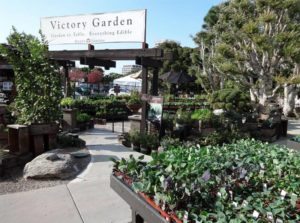


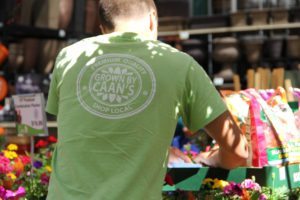
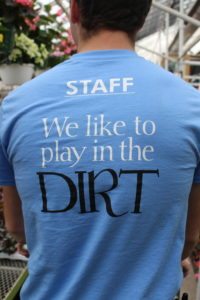
 Videos
Videos





